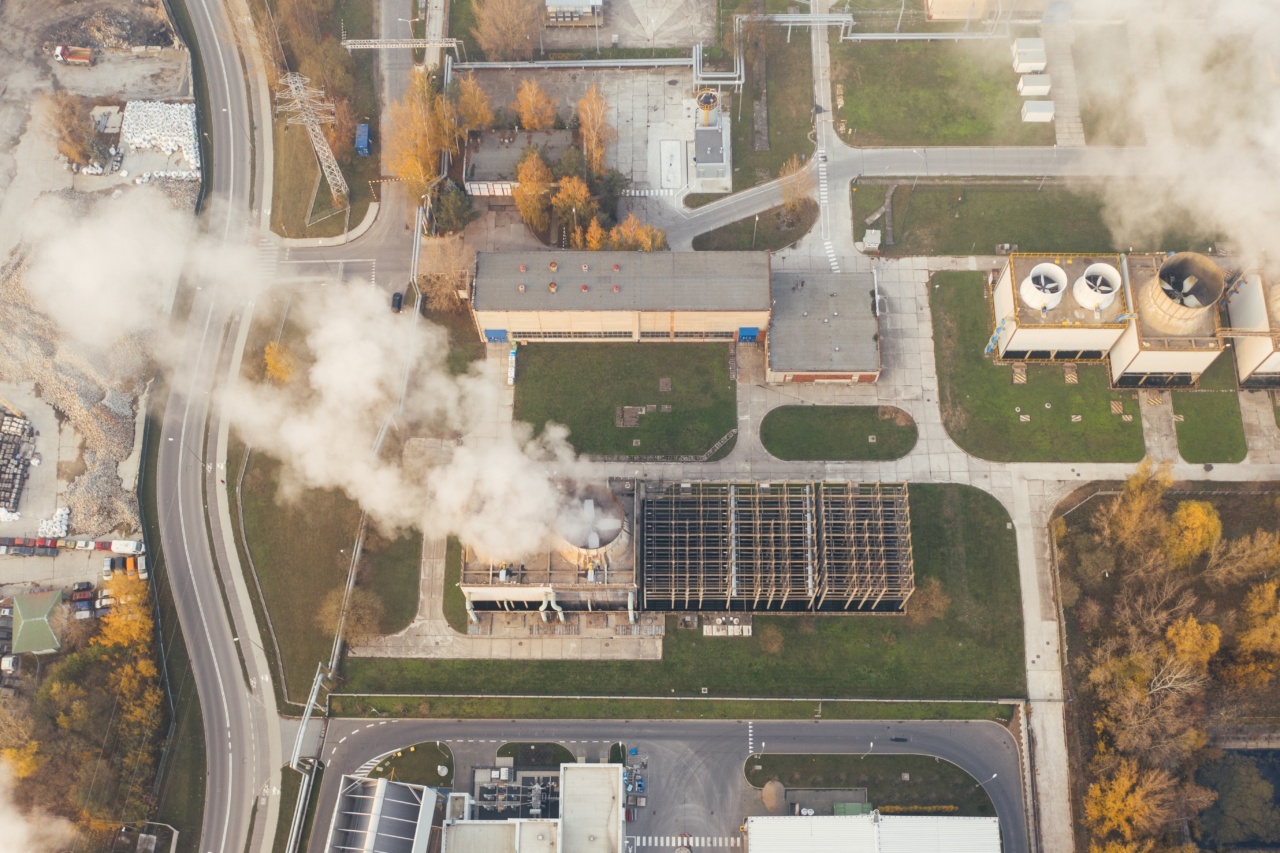Emphysema, a chronic lung disease that affects millions of people worldwide, has long been associated with smoking. However, recent research suggests that non-smokers are also at risk, particularly due to the effects of climate change and air pollution.
While smoking remains a major cause of emphysema, it is becoming increasingly clear that other environmental factors play a significant role in the development and progression of this debilitating condition.
The Connection Between Climate Change and Emphysema
Climate change is a global phenomenon that has far-reaching impacts on human health. Rising temperatures, extreme weather events, and shifts in precipitation patterns can all have serious consequences for respiratory health.
In relation to emphysema, several key factors deserve our attention:.
1. Increased Air Temperatures and Lung Function
Higher temperatures can worsen respiratory symptoms and impair lung function, even in healthy individuals. For people with emphysema, extreme heat can be especially problematic as it increases the need for oxygen and exacerbates breathing difficulties.
Heatwaves, which are becoming more frequent and intense due to climate change, can exacerbate existing lung conditions and increase the risk of hospitalization.
2. Air Pollution and Respiratory Health
Air pollution is a major public health concern, and its impact on respiratory health is well-documented.
Pollutants such as particulate matter and ozone can trigger inflammation in the lungs, worsening symptoms of emphysema and other respiratory conditions. As climate change accelerates, the frequency and intensity of wildfires, which release significant amounts of air pollutants, are also increasing.
This poses a particular risk to non-smokers with emphysema who may not have developed the condition due to personal smoking habits.
3. Increased Allergens and Respiratory Disease
Climate change is associated with shifts in plant phenology and increased pollen production. This can lead to longer and more intense allergy seasons, which may aggravate symptoms in individuals with emphysema.
Allergens, including pollen, can trigger inflammation and cause bronchoconstriction, making it harder for those with emphysema to breathe. Additionally, higher levels of airborne allergens can contribute to asthma exacerbations, and there is evidence suggesting a link between asthma and emphysema.
The Role of Air Pollution in Emphysema
While the connection between climate change and emphysema is becoming clearer, air pollution remains a well-established risk factor for the development and progression of this disease.
Non-smokers with emphysema are particularly vulnerable to the detrimental effects of air pollutants, which include:.
1. Particulate Matter (PM)
Particulate matter refers to microscopic particles suspended in the air, such as dust, soot, and pollen. These particles can penetrate deep into the lungs, causing inflammation and damage to lung tissue.
Prolonged exposure to high levels of particulate matter is associated with an increased risk of developing emphysema and other respiratory conditions.
2. Ozone (O3)
Ozone is a highly reactive gas that is known to have harmful effects on respiratory health. It forms when certain air pollutants, such as nitrogen oxides and volatile organic compounds, react with sunlight.
Ozone can irritate the airways and exacerbate symptoms in individuals with emphysema. Long-term exposure to high levels of ozone has been linked to the development and progression of emphysema.
3. Indoor Air Pollution
While outdoor air pollution often receives significant attention, indoor air pollution is equally important, especially for non-smokers with emphysema who spend extended periods indoors.
Common sources of indoor air pollution include cooking and heating appliances, tobacco smoke, and building materials. Exposure to indoor pollutants can contribute to respiratory symptoms and worsen the progression of emphysema.
Protecting Against Emphysema in a Changing Climate
Given the increasing risks of emphysema associated with climate change and air pollution, it is crucial to implement strategies that protect respiratory health. Here are some key measures:.
1. Reducing Emissions and Improving Air Quality
To mitigate the effects of climate change and air pollution, efforts should focus on reducing greenhouse gas emissions, promoting renewable energy sources, and implementing effective air quality policies.
These measures will not only benefit individuals with emphysema but also have positive impacts on overall respiratory health.
2. Enhancing Public Awareness
Public education campaigns can help raise awareness about the risks of emphysema and the importance of protecting respiratory health.
Informing the general population, particularly non-smokers, about the connection between climate change, air pollution, and emphysema can encourage individuals to take preventive measures and seek medical care when needed.
3. Encouraging Regular Health Check-ups
Regular health check-ups, including lung function tests, can help identify early signs of emphysema and enable timely intervention. This is particularly important for non-smokers with emphysema, as they may not always be aware of their heightened risk.
Early diagnosis and appropriate management can significantly improve quality of life and reduce disease progression.
4. Taking Personal Precautions
Individuals can protect themselves from the harmful effects of air pollution and climate change by taking simple precautions.
These include avoiding outdoor activities during times of high air pollution, using air purifiers and filters in indoor environments, and wearing masks when necessary. Additionally, maintaining a healthy lifestyle, including regular exercise and a balanced diet, can support respiratory health and help manage emphysema symptoms.
Conclusion
Emphysema, a condition long associated with smoking, is increasingly affecting non-smokers as a result of climate change and air pollution.
Rising temperatures, increased allergens, wildfires, and pollutants from various sources all contribute to the development and worsening of emphysema symptoms in individuals who have never smoked. Recognizing these connections and taking appropriate measures to protect respiratory health are crucial in addressing this growing public health concern.






























